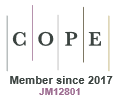Live biotherapies for improved respiratory health in children
Tamlyn Fairall A , Yi Bin Koh A , Anastasia Basuki A , Mark P. Nicol A B and Ritika Kar Bahal A *A
B

Tamlyn Fairall is a research scientist at the Marshall Centre for Infectious Disease, The University of Western Australia (UWA). Tamlyn has research interests in infectious disease and microbiology and how this can contribute to advancements in public health. |

Yi Bin Koh is a PhD student at The University of Western Australia. Her research focuses on interbacterial relationships within the nasopharynx, aiming to address childhood pneumonia. |

Anastasia Basuki is an Honours student at The University of Western Australia. Currently, Anastasia is researching the mechanisms of interactions between nasopharyngeal bacteria, aiming to contribute to future research in this area. |

Mark Nicol is professor of microbiology at The University of Western Australia. He studied medicine and medical microbiology at the University of the Witwatersrand and completed his PhD in childhood tuberculosis in Cape Town. His research explores the role of the early life microbiome in acute and chronic respiratory illnesses in children. He also has an active research programme involved in the development and evaluation of better diagnostic tests for tuberculosis and pneumonia. He is Chair of the WHO Advisory Group on Tuberculosis Diagnostics and Laboratory Strengthening. |

Dr Ritika Kar Bahal is a BrightSpark Early Career Child Health Research fellow at The University of Western Australia. She completed her PhD in tuberculosis research from University of Delhi, India, and relocated to Perth in 2018. Her current research explores the role of the early life microbiome and bacterial–bacterial interactions in respiratory illnesses in children. Dr Bahal has received several prestigious scholarships and awards, such as the Nature Microbiome Accelerator award 2024 and the FEMS ECR talk award at ASM National Meeting 2024. She works closely with community members in co-designing translational goals for her research. |
Abstract
Pneumonia remains the leading cause of death in children under five outside of the neonatal period. Antibiotic treatment for bacterial pneumonia is usually effective; however, the rise of antimicrobial resistance threatens treatment outcomes and the adverse health outcomes of administrating antibiotics in early childhood can be lifelong. Children with pneumonia also place immense pressure on health systems, therefore, the prevention of pneumonia in children must be prioritised. An alternative novel potential prevention strategy for respiratory infections, is the use of live biotherapeutics. This is based on recent research showing that the composition of the nasopharyngeal microbiome follows succession patterns in early childhood, with certain bacterial genera, being associated with healthy respiratory outcomes whereas others are associated with poor respiratory outcomes. Our research uses nasopharyngeal samples from the Drakenstein Child Health Study (DCHS) to create a biobank of isolates for researching bacterial interactions within the nasopharyngeal microbiome. We aim to identify candidate bacterial strains that may be used in the development of live biotherapies targeting potentially pathogenic bacteria and therefore, improve respiratory health outcomes in children.
Keywords: biobank, commensal bacteria, DCHS, Drakenstein Child Health Study, live biotherapeutics, microbial interactions, nasopharyngeal microbiome, pathogens, pneumonia, respiratory tract.
 Tamlyn Fairall is a research scientist at the Marshall Centre for Infectious Disease, The University of Western Australia (UWA). Tamlyn has research interests in infectious disease and microbiology and how this can contribute to advancements in public health. |
 Yi Bin Koh is a PhD student at The University of Western Australia. Her research focuses on interbacterial relationships within the nasopharynx, aiming to address childhood pneumonia. |
 Anastasia Basuki is an Honours student at The University of Western Australia. Currently, Anastasia is researching the mechanisms of interactions between nasopharyngeal bacteria, aiming to contribute to future research in this area. |
 Mark Nicol is professor of microbiology at The University of Western Australia. He studied medicine and medical microbiology at the University of the Witwatersrand and completed his PhD in childhood tuberculosis in Cape Town. His research explores the role of the early life microbiome in acute and chronic respiratory illnesses in children. He also has an active research programme involved in the development and evaluation of better diagnostic tests for tuberculosis and pneumonia. He is Chair of the WHO Advisory Group on Tuberculosis Diagnostics and Laboratory Strengthening. |
 Dr Ritika Kar Bahal is a BrightSpark Early Career Child Health Research fellow at The University of Western Australia. She completed her PhD in tuberculosis research from University of Delhi, India, and relocated to Perth in 2018. Her current research explores the role of the early life microbiome and bacterial–bacterial interactions in respiratory illnesses in children. Dr Bahal has received several prestigious scholarships and awards, such as the Nature Microbiome Accelerator award 2024 and the FEMS ECR talk award at ASM National Meeting 2024. She works closely with community members in co-designing translational goals for her research. |
References
1 Bender RG et al. (2024) Global, regional, and national incidence and mortality burden of non-COVID-19 lower respiratory infections and aetiologies: a systematic analysis from the Global Burden of Disease Study 2021. Lancet Infect Dis 24, 974-1002.
| Crossref | Google Scholar |
2 O’Brien KL et al. (2019) Causes of severe pneumonia requiring hospital admission in children without HIV infection from Africa and Asia: the PERCH multi-country case–control study. Lancet 394, 757-779.
| Crossref | Google Scholar |
3 Zar HJ, Bush A (2023) Early childhood lower respiratory tract infection: a key determinant of premature adult respiratory mortality. Lancet 401, 1135-1137.
| Crossref | Google Scholar | PubMed |
4 Mejbah Uddin B et al. (2018) Role of viral and bacterial pathogens in causing pneumonia among Western Australian children: a case–control study protocol. BMJ Open 8, e020646.
| Crossref | Google Scholar | PubMed |
5 Bradley JS et al. (2011) Executive summary: The management of community-acquired pneumonia in infants and children older than 3 months of age: clinical practice guidelines by the Pediatric Infectious Diseases Society and the Infectious Diseases Society of America. Clin Infect Dis 53, 617-630.
| Crossref | Google Scholar | PubMed |
6 Royal Melbourne Hospital and the National Centre for Antimicrobial Stewardship (2024) Antimicrobial prescribing practice in Australian hospitals. Results of the 2021 Hospital National Antimicrobial Prescribing Survey. Australian Government Department of Health and Aged Care, Canberra, ACT, Australia. https://www.amr.gov.au/sites/default/files/2024-01/antimicrobial-prescribing-practice-in-australian-hospitals-results-of-the-2021-hospital-national-antimicrobial-prescribing-survey.pdf
7 Man WH et al. (2019) Bacterial and viral respiratory tract microbiota and host characteristics in children with lower respiratory tract infections: a matched case–control study. Lancet Respir Med 7, 417-426.
| Crossref | Google Scholar | PubMed |
8 Lu Y et al. (2023) Early-life antibiotic exposure and childhood asthma trajectories: a national population-based birth cohort. Antibiotics 12, 314.
| Crossref | Google Scholar | PubMed |
9 Murray CJL et al. (2022) Global burden of bacterial antimicrobial resistance in 2019: a systematic analysis. The Lancet 399, 629-655.
| Crossref | Google Scholar |
10 Claassen-Weitz S et al. (2023) Succession and determinants of the early life nasopharyngeal microbiota in a South African birth cohort. Microbiome 11, 127.
| Crossref | Google Scholar | PubMed |
11 Flynn M, Dooley J (2021) The microbiome of the nasopharynx. J Med Microbiol 70, 001368.
| Crossref | Google Scholar | PubMed |
12 Teo SM et al. (2015) The infant nasopharyngeal microbiome impacts severity of lower respiratory infection and risk of asthma development. Cell Host Microbe 17, 704-715.
| Crossref | Google Scholar |
13 Reyman M et al. (2021) Microbial community networks across body sites are associated with susceptibility to respiratory infections in infants. Commun Biol 4, 1233.
| Crossref | Google Scholar | PubMed |
14 Horn KJ et al. (2021) Corynebacterium species inhibit Streptococcus pneumoniae colonization and infection of the mouse airway. Front Microbiol 12, 804935.
| Crossref | Google Scholar | PubMed |
15 Claassen-Weitz S et al. (2021) The association between bacteria colonizing the upper respiratory tract and lower respiratory tract infection in young children: a systematic review and meta-analysis. Clin Microbiol Infect 27, 1262-1270.
| Crossref | Google Scholar | PubMed |
16 Brugger SD et al. (2020) Dolosigranulum pigrum cooperation and competition in human nasal microbiota. mSphere 5, e00852-20.
| Crossref | Google Scholar | PubMed |
17 Bosch A et al. (2017) Maturation of the infant respiratory microbiota, environmental drivers, and health consequences. A prospective cohort study. Am J Respir Crit Care Med 196, 1582-1590.
| Crossref | Google Scholar | PubMed |
18 de Steenhuijsen Piters WAA et al. (2019) Interaction between the nasal microbiota and S. pneumoniae in the context of live–attenuated influenza vaccine. Nat Commun 10, 2981.
| Crossref | Google Scholar | PubMed |
19 Zar HJ et al. (2015) Investigating the early-life determinants of illness in Africa: the Drakenstein Child Health Study. Thorax 70, 592-594.
| Crossref | Google Scholar | PubMed |
20 Claassen-Weitz S et al. (2025) Nasopharyngeal microbiota in South African infants with lower respiratory tract infection: a nested case–control study of the Drakenstein Child Health Study. Clin Infect Dis ciaf184 [Published online early 17 April 2025].
| Crossref | Google Scholar | PubMed |
21 Yu K et al. (2025) Interactions between bacteria in the human nasopharynx: ascoping review. Lancet Microbe 101062.
| Crossref | Google Scholar | PubMed |
22 Xu L et al. (2021) Nasopharyngeal microbiome composition associated with Streptococcus pneumoniae colonization suggests a protective role of Corynebacterium in young children. PLoS ONE 16, e0257207.
| Crossref | Google Scholar | PubMed |
23 Biesbroek G et al. (2014) The impact of breastfeeding on nasopharyngeal microbial communities in infants. Am J Respir Crit Care Med 190, 298-308.
| Crossref | Google Scholar | PubMed |
24 de Steenhuijsen Piters WA et al. (2016) Nasopharyngeal microbiota, host transcriptome, and disease severity in children with respiratory syncytial virus infection. Am J Respir Crit Care Med 194, 1104-1115.
| Crossref | Google Scholar | PubMed |
25 Kelly MS et al. (2022) Non-diphtheriae Corynebacterium species are associated with decreased risk of pneumococcal colonization during infancy. ISME J 16, 655-665.
| Crossref | Google Scholar | PubMed |
26 Hardy BL, Merrell DS (2021) Friend or foe: interbacterial competition in the nasal cavity. J Bacteriol 203, e00480-20.
| Crossref | Google Scholar | PubMed |
27 Ravel J et al. (2024) A novel multi-strain vaginal synbiotic is effective in optimizing the vaginal microbiome: results from a randomized, placebo-controlled clinical trial. American Journal of Obstetrics & Gynecology 231(6), S1303.
| Crossref | Google Scholar |


